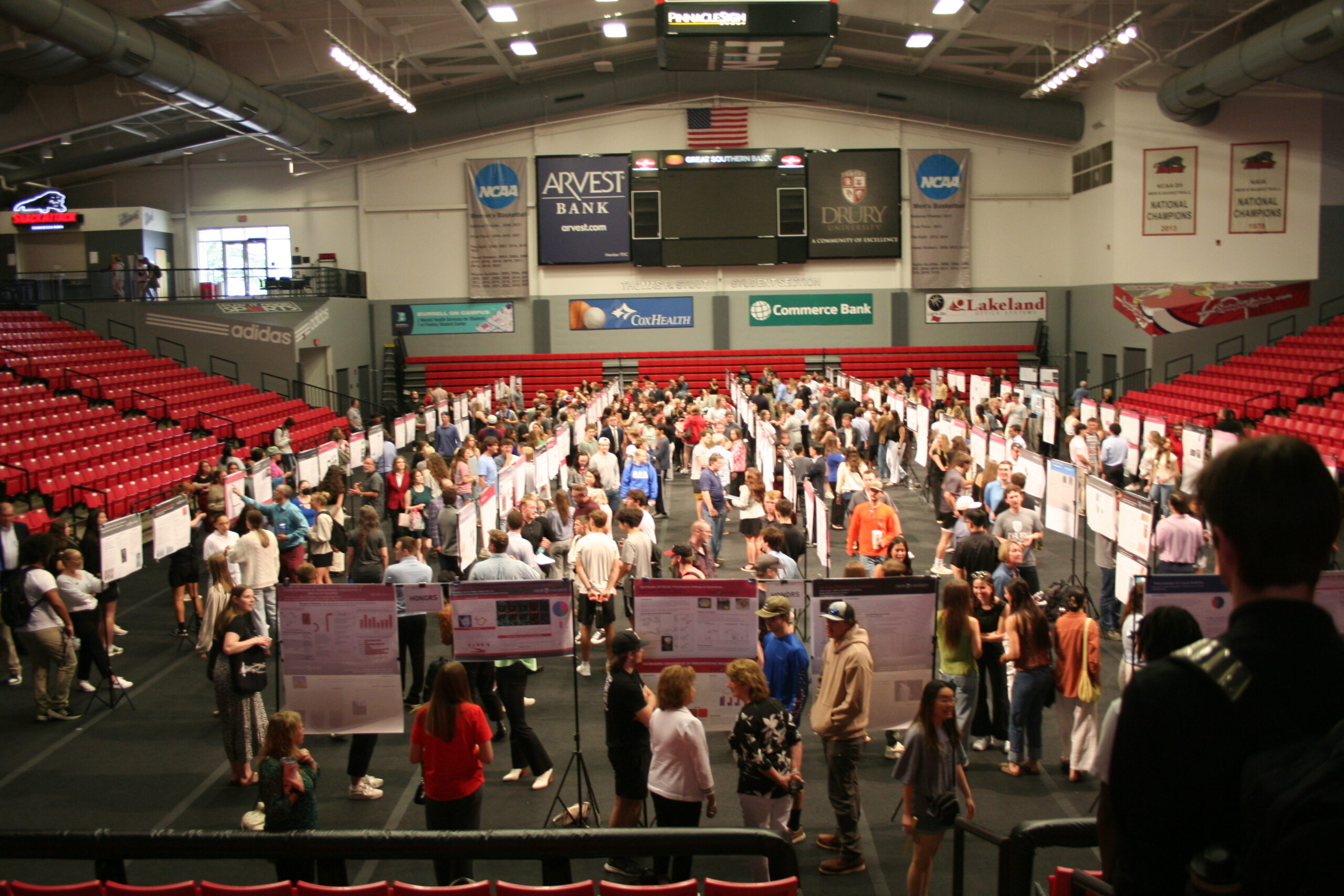
Fusion Day 2025: showcasing student creativity and impact
Campus News May 1, 2025, 0 Comment 7Fusion Day 2025 featured a diverse range of academic and creative activities, highlighting student achievements across fields through panels, performances, presentations, and exhibitions. The day showcased various abilities and interests of Drury students, from research presentations to displays of artwork. However, for many, the poster session was a highlight of the event, with the room buzzing with ideas, conversation, and personal connections.
Throughout the poster session, students stood by their meticulously made displays, eager to tell the story behind their work. Faculty, peers, and guests crowded the room, asking questions, expressing admiration, and having conversations that went beyond the posters themselves.

Kate Black’s senior capstone project for her graphic design major centered on creating a branding identity for a coffee establishment called Daily Grind. The proposal aimed at young professionals by providing a location that could function as both a café and a secondary office, suitable for people seeking an alternative to standard work spaces.
“I wanted to create a space where young professionals could work or meet, with extended hours to suit their schedules,” Black said.
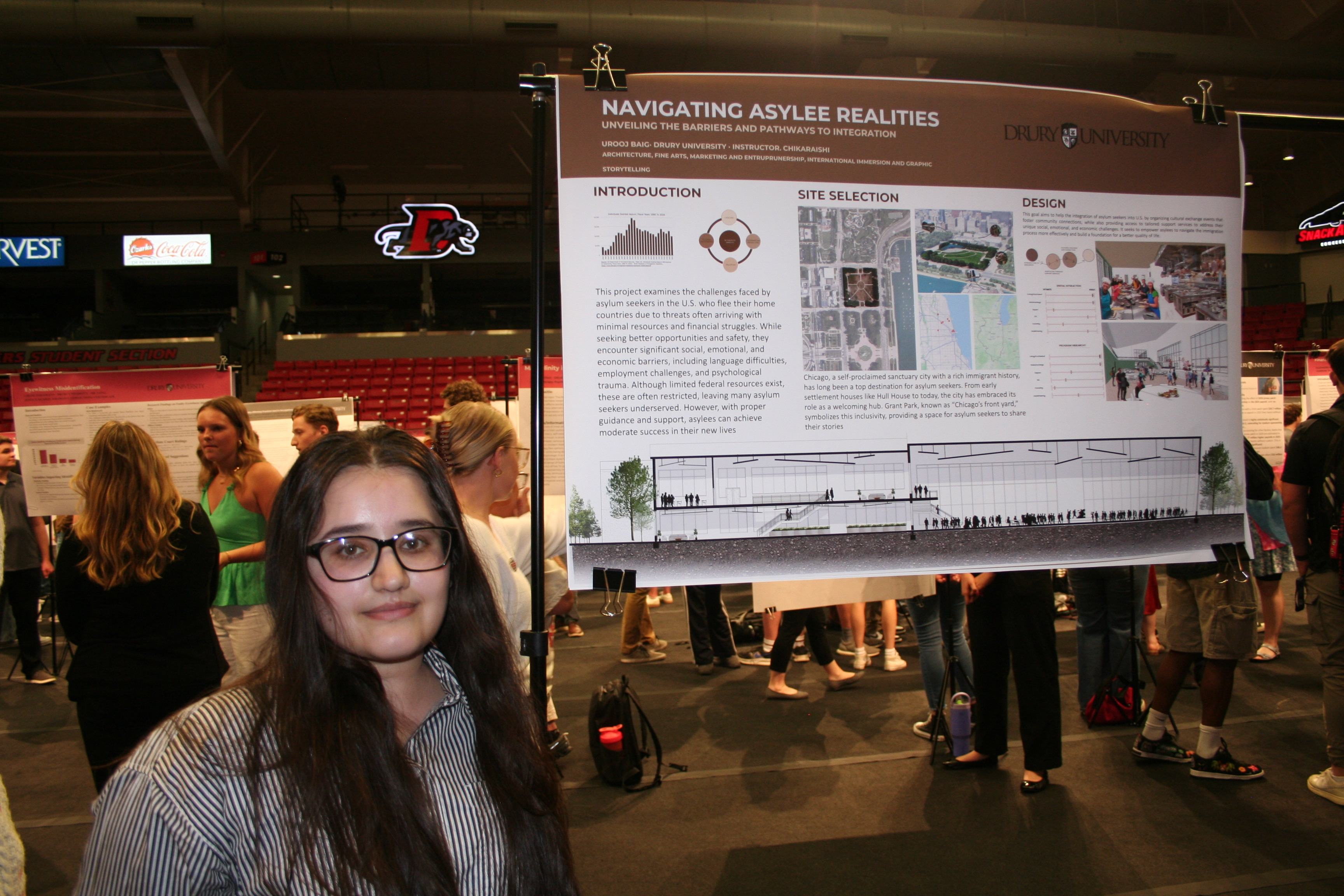
Urooj Baig’s architecture project, Navigating Asylum Realities, focused on the major challenges that asylum seekers experience. Drawing on her personal experience as an immigrant, Baig aimed to create architectural environments that may provide people navigating a challenging legal and cultural environment with both practical and emotional support. For those who are frequently excluded and alone, her work highlighted the importance of creating spaces that promote safety, community, and dignity.
Given that architecture has a significant impact on how individuals feel a sense of belonging and access resources, Baig stated, “As an immigrant myself, I wanted to create a space that would help them feel more welcome and supported.” The project represented a greater concern about social equality and how constructed settings can either worsen or alleviate systemic hardship.
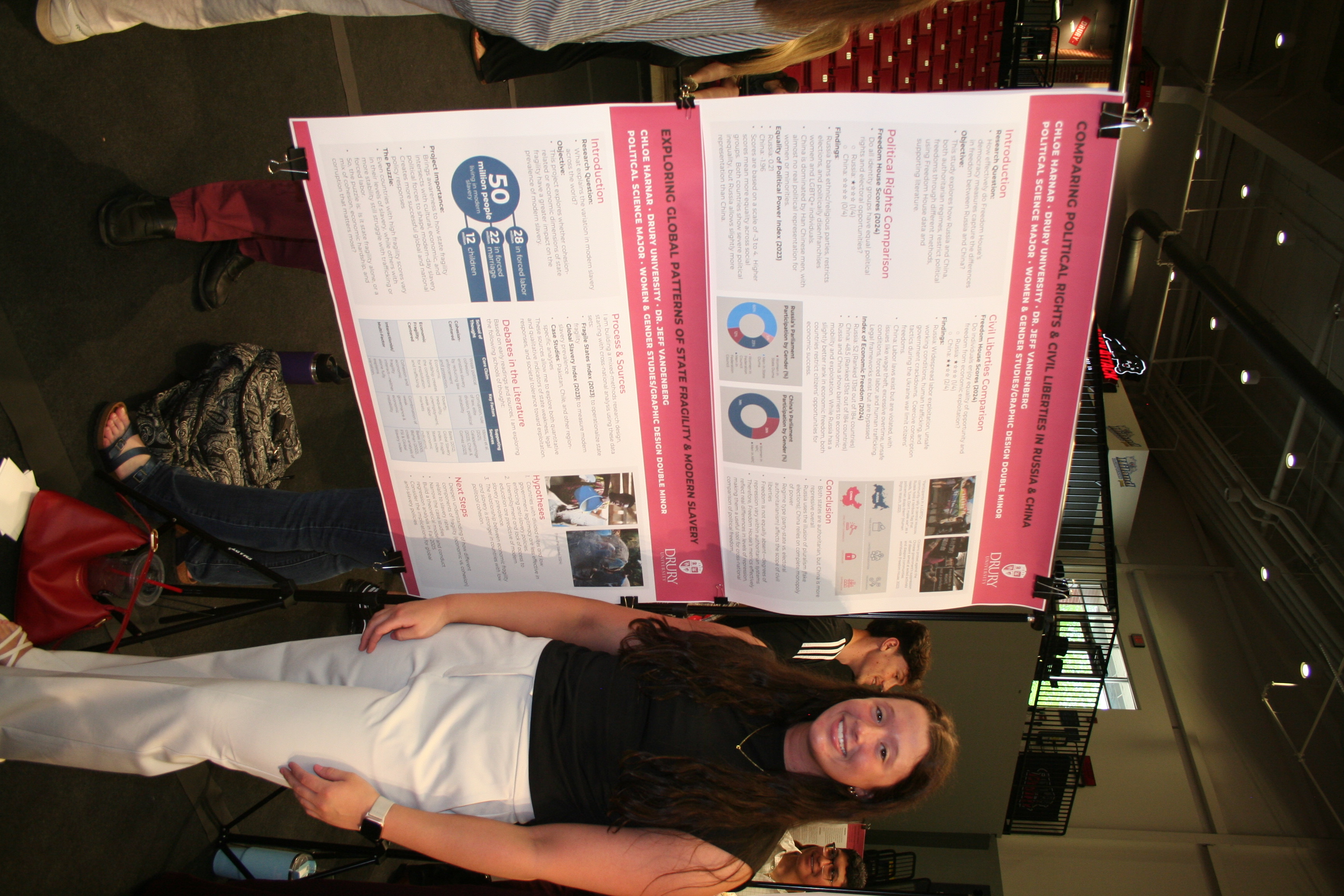
Chloe Harnar presented two different but thematically related research projects. The first examined the suppression of political and civil liberties in authoritarian countries like China and Russia, looking at how governments keep power through censorship, state surveillance, and restricted personal freedoms.
Her second project focused on the ongoing difficulty of modern slavery, which she analyzed through the lens of state fragility, factors such as economic instability, weak rule of law, and political division that allow exploitative practices to flourish.
According to Harnar’s research, these markers of fragility are frequently disregarded in international discussions about human rights. “Even though slavery is legally abolished, it still exists in practice, and I wanted to understand why,” Harnar said, underlining the need of addressing not just the symptoms of injustice but also the structural factors that allow it to continue. Her efforts highlighted the persistence of inequality, as well as the importance of informed research in pushing for global change.
Senior Kylie Warden, Kylie Warden, along with her team members AJ Agers, Aly Boyd, and Kamryn Eslinger, presented a capstone project that merged mathematics and biomedical science, demonstrating how multidisciplinary collaboration may contribute to cancer research. Warden and her team worked together to create a mathematical model depicting colon cancer behavior using curcumin research data from the university’s Trustee Science Center (TSC) lab.
“Our goal is to model cancer as accurately as possible so scientists don’t have to rely solely on time-intensive lab work,” Warden explained. The model employed mathematical techniques to analyze curcumin analogs, which are compounds designed to inhibit cancer, with the goal of increasing research efficiency. “You realize how much you’ve learned just by doing the research,” said Warden, who had little prior expertise in science.
She credited Dr. Barker for assembling a team that was well-balanced in math and biology, but she acknowledged that coordinating schedules was challenging. “We’d meet once a week, but outside of that, it was difficult to align schedules” she stated.
Looking ahead, Warden expects that future students will be able to improve the experiment using additional TSC data and maybe machine learning. “A feasibility proof will also help ensure the math behaves like real biology, no infinite cell growth, for example,” she added.
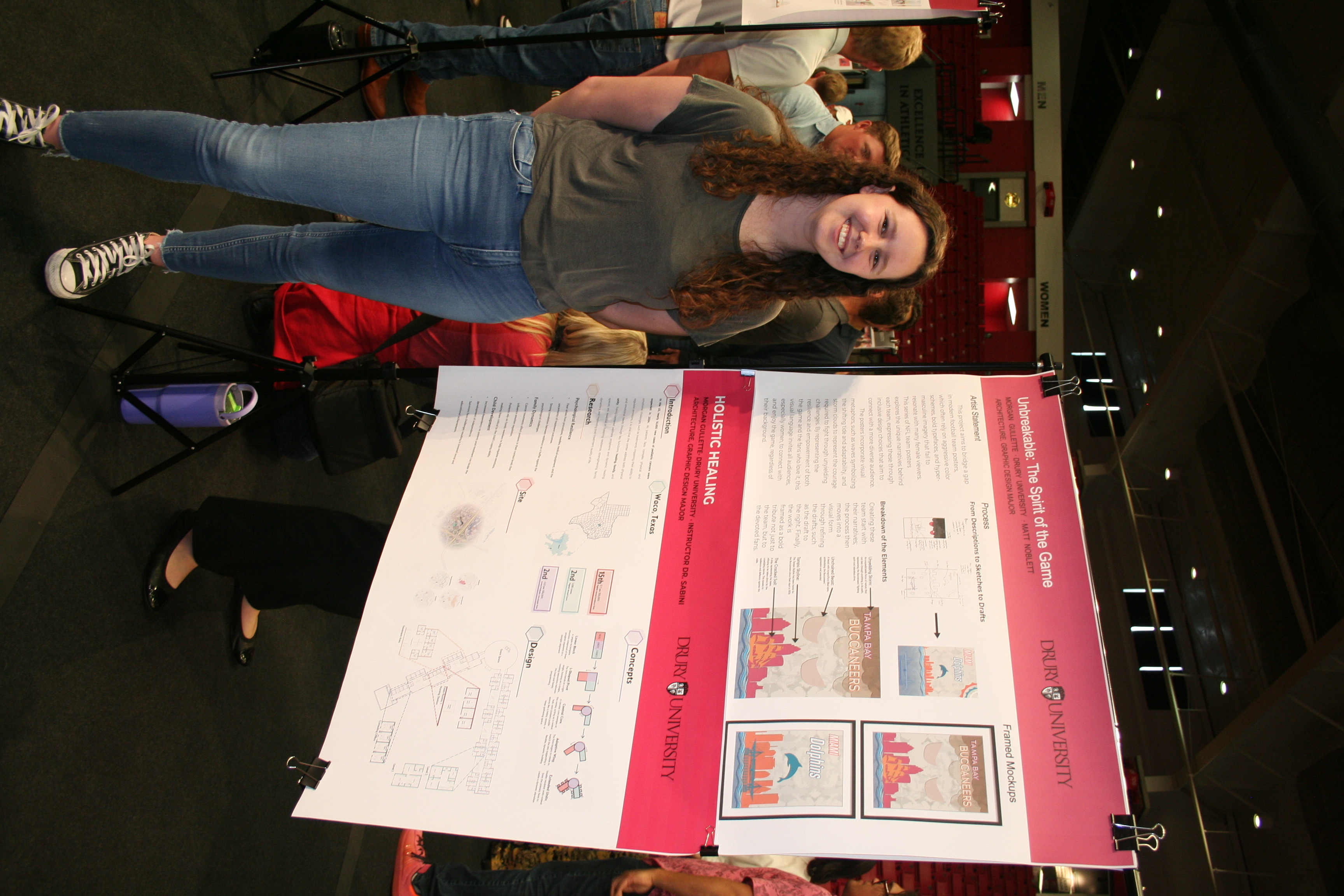
Morgan Gullette presented two senior capstone projects, one from her graphic design major and the other from her architectural focus. Her graphic design work recreated NFL posters to better appeal to female fans, pointing out that “a lot of the NFL’s visual branding is super masculine.” Rather than using team logos, she concentrated on symbols specific to each group, enabling them to live on the page.
Her architectural project attempted to develop environments that would benefit pediatric cancer patients and their families. She noted that children undergoing chemotherapy frequently endure hormonal suppression, weakening their emotional regulation and increasing their reliance on family. Gullette’s concept includes lodging for parents within treatment centers to provide a healing atmosphere as well as a temporary home for the children.
She was particularly struck by the fact that her home state, Texas, has the second-highest pediatric cancer rate in the country but ranks low in access to specialized care. “It kind of broke my heart,” she explained, highlighting the need for greater resources in her community.
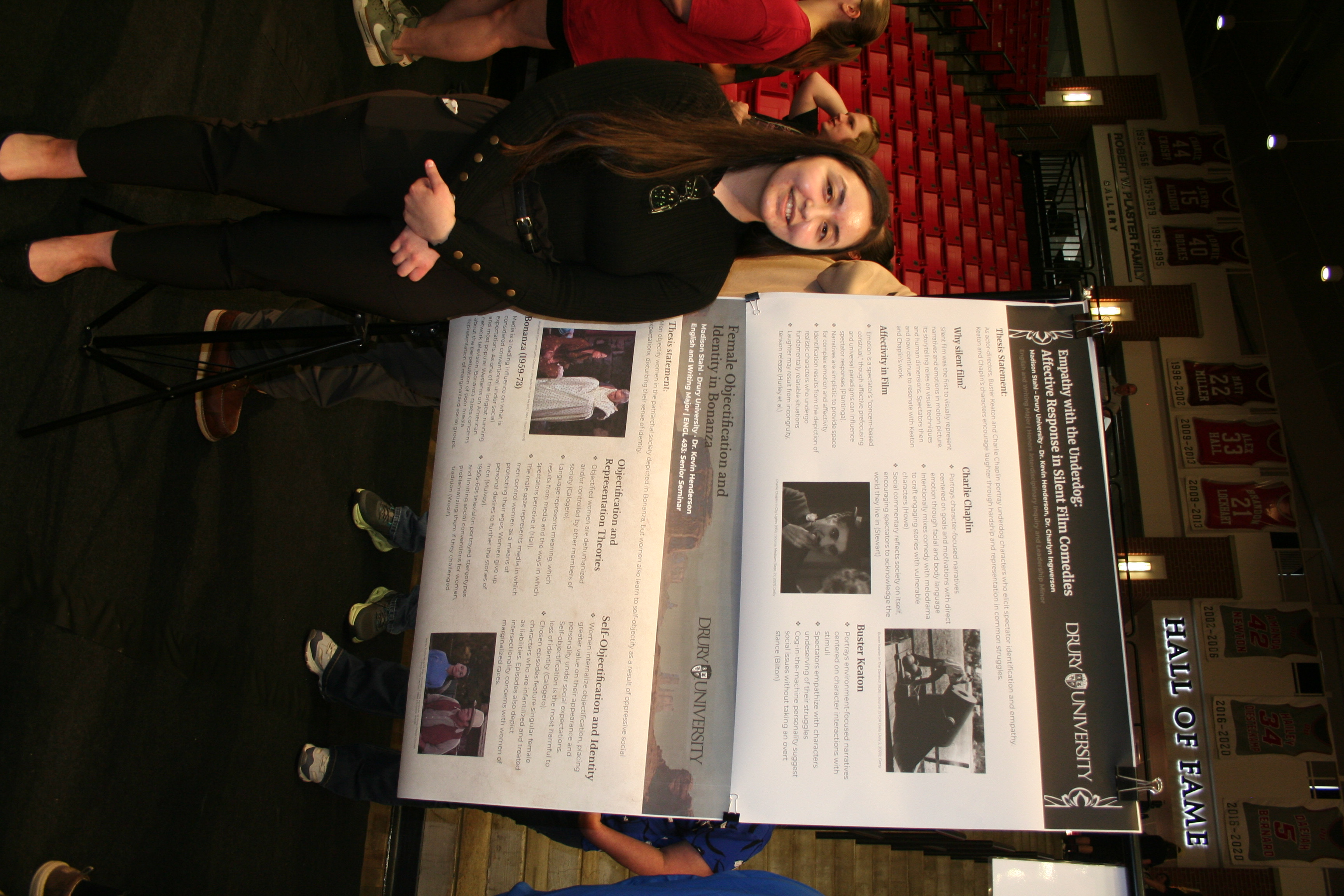
Madison Stahl, inspired by childhood memories, turned a critical eye to Bonanza, a 1960s Western TV show she used to watch with her grandparents. “I came back to it and realized how insufferable some of the portrayals of women and minority groups were,” she said.
Stahl’s research focused on both obvious objectification and the more subtle ways in which women internalize social expectations. “Self-objectification is harmful because it makes women echo the stereotypes they’ve absorbed. It erases their sense of identity.” The research was both emotionally draining and enlightening for her.
“It was difficult to find academic sources on Bonanza. It’s an underdeveloped area of research, but that made it even more meaningful,” she noted. “Media builds on itself. What we saw in shows like Bonanza still influences how women are portrayed today.
Senior Hunter White and Erin Fick focused on the importance of the presumption of innocence. “Legally, we’re innocent until proven guilty,” White argued, “but the public and media often reverse that.” Inspired by a course on exonerees, White was struck by the shocking fact that over 3,600 innocent people had been unfairly imprisoned in the United States since 1989, resulting in a total loss of 30,000 years.
“That’s heartbreaking,” she said. White’s research concentrated on pre-trial media prejudice and cognitive phenomena like as confirmation and anchoring bias. “People form judgments quickly, and mugshots or headlines anchor those impressions,” she said, adding that even in cases where someone is found innocent, that perception is difficult to erase.
Recognizing how many people lose everything and are still perceived as guilty when they reenter society, she found the project’s emotional weight to be difficult to bear. Her takeaway was simple: “Innocence doesn’t go viral. Outrage does. People need to slow down, ask questions, and not rely on gossip and assumptions.”
Fusion Day provided an opportunity for students to showcase not only what they had learned, but also who they were becoming. Whether through math, media critique, design, or justice reform, these students proved the power of curiosity, teamwork, and compassion.
All photos taken by Leila Ehrichs
Leave a comment